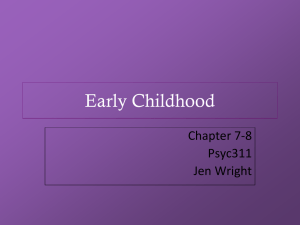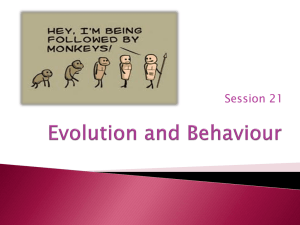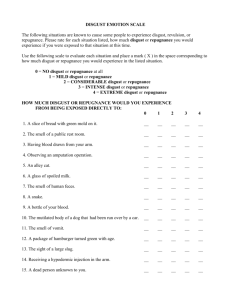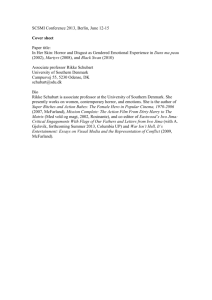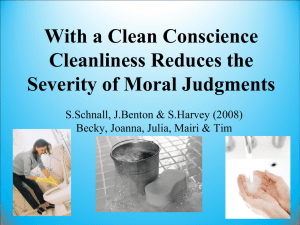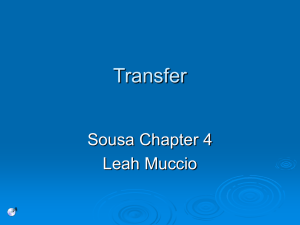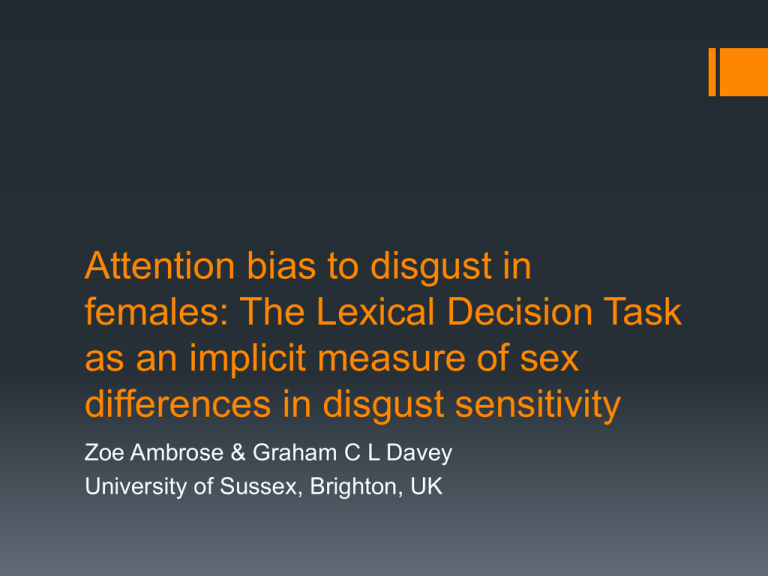
Attention bias to disgust in
females: The Lexical Decision Task
as an implicit measure of sex
differences in disgust sensitivity
Zoe Ambrose & Graham C L Davey
University of Sussex, Brighton, UK
Sex Differences in Disgust
Sensitivity
Females usually score higher on questionnaire measures of
disgust sensitivity
Connolly, Olatunji & Lohr (2007)
Females score higher on measures of both disgust
propensity and sensitivity (DPSS-R)
Davey, MacDonald, Kollokho & Davie, unpublished
Disgust & Anxiety Disorders
Higher incidence of anxiety disorders in females than males
(Fredrikson et al., 1996; Gullone et al., 2001)
In disgust-relevant disorders this difference may be mediated
by sex differences in disgust sensitivity
Blood-injection-injury fear (Olatunji, Arrindell & Lohr, 2005)
Contamination fears (Olatunji, Arrindell, Sawchuk & Lohr, 2005)
Small animal fears (Davey, 1994)
Problems with Inventory Measures
Self-report measures prone to response bias
Sex differences in social acceptability of responses
Need for more direct measures of response biases to disgust
stimuli
The Lexical Decision Task
A word information processing task
Reaction times associated with the task reflect the cognitive
load required to process the word (Coltheart et al., 1977)
Participants are required to decide whether letter-strings are
words or non-words
Participants are usually faster to correctly identify words
congruent with their mood (Olafson & Ferraro, 2001)
Task is used extensively in the anxiety and depression
literature, but less so in the domain of disgust
Purpose of the Study
Use a Lexical Decision Task to:
Investigate the effect of mood state (disgust v neutral) on
processing of disgust words
Investigate the effect of participant’s sex on processing of disgust
words
If females process disgust words more quickly than males,
this would provide support for the view that sex differences in
disgust reflect genuine underlying differences in emotion
processing rather than mere social desirability effects
Participants
62 undergraduate and postgraduate students aged 18 to 36
(M= 21.82, SD= 3.80), from the University of Sussex,
participated in the experiment.
30 were male, aged 18-36 (M= 22.57, SD= 4.35) and 32
were female, aged 18-32 (M= 21.12. SD= 3.11)
All participants were volunteers who were offered entry into a
prize draw as an incentive for taking part.
Design
The experiment employed a 2 (sex: male, female) x 2 (mood
induction group: disgust, neutral) x 3 (word type: disgust;
neutral; pseudo-word) mixed design.
The between subjects variables were sex and mood
induction group and the within subjects factor was word-type.
The dependent variable was reaction time, which had three
levels: disgust, neutral and pseudo-word reaction times).
Procedure
HADS & DPSS-R
VAS Mood Measures 1
DISGUST & NEUTRAL mood inductions
VAS Mood Measures 2
Lexical Decision Task
Debriefing & Thanks
Lexical Decision Task
This task consisted of 180 word trials (45 disgust words (eg. vomit), 45
neutral words (eg. video) and 90 filler pseudo-words (eg. movit) which
took approximately 7-8 minutes to complete.
13 disgust relevant words were taken from Charash (2002) and 32
more were created from these, using a thesaurus.
Disgust words were matched with neutral words of a similar written
word frequency, word type (eg. noun, verb, adjective) and number of
letters, using Kucera & Francis (1982).
Pseudo-words; letter strings which follow the same grammatical
structure as real words but are not actual words were created by using
anagrams of the disgust and neutral words.
Stimuli were presented one at a time, in the centre of the screen, in size
22 Courier New font, in a sequential order, with a 450 millisecond intertrial interval between each word trial. Participants were required to
press ‘1’ if the stimulus was a word or ‘0’ if the stimulus was a non-word.
Results: Mood Inductions
Participants in the DISGUST mood group reported greater
disgust (M= 49.50, SE=4.40) post mood induction than
participants in the NEUTRAL group (M=4.70, SE=1.35). This
difference was significant [t(36.76) = 9.73, p<.001].
However, post mood-induction, DISGUST mood group
showed higher levels of anxiety and lower levels of
happiness than NEUTRAL mood group
Comparability of Groups
No significant differences between the two mood groups prior
to the experiment on measures of DPSS-R disgust
propensity; [t(60)= .89 p=.38], DPSS-R disgust sensitivity;
[t(60)=.90 p=.37], HADS anxiety [t(60) = -.09 p=.93] or HADS
depression. [t(60)= -.89 p=.38]
Greater disgust propensity was reported in females (M=
24.00 SE= .67) than males, (M=22.07 SE=.61) [t(60)=-2.13
p<.05.].
Greater disgust sensitivity was also reported in females (M=
20.41 SE=.87) than males (M= 16.13 SE= .67) [t(60)=-3.85
p<.001.]
Reaction Time Data
Significant main effect for word type [F(2,116)= 56.49
p<.001.]. Participants responded significantly slower to
pseudo-words than to disgust words, and to neutral words;
but reaction time did not differ significantly between disgust
words and neutral words.
No significant interaction was found between word type and
mood condition [F(2,116) = .78 p>.05] or between word type,
group and sex, [F(2,116) = .69 p>.05].
There was a significant interaction between word type and
sex. F(2,116) = 3.23 p<.05, in which females exhibited faster
reaction times to disgust words than males.
Reaction Time: Disgust Words
Difference Score Analysis
Conclusions
Females respond significantly faster than males to disgust
words
Females scored significantly higher than males on DPSS-R
Propensity & Sensitivity
No differences in error rates between males and females
No differential effect of mood state on processing of disgust
words
Results suggest that sex difference in disgust sensitivity exists
at the level of processing disgust-relevant stimuli
Findings may reflect stronger mental representations of disgust
or more refined categorization of disgust in females than males
Further research needed to determine whether this sex
difference in processing contributes to sex differences in
vulnerability to disgust-relevant anxiety disorders



